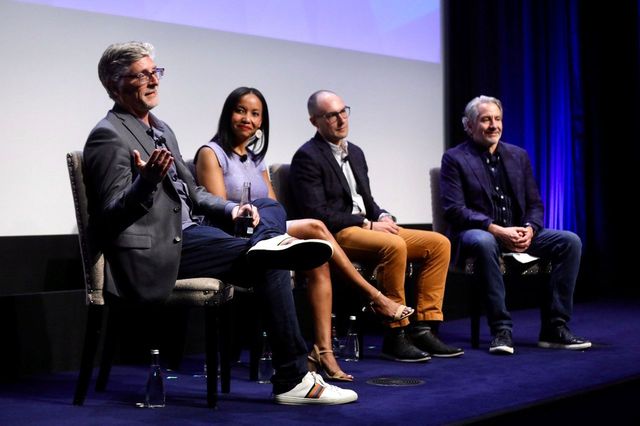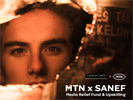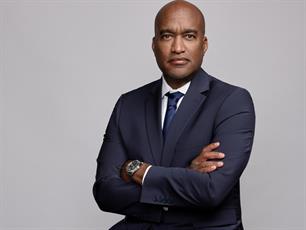Paul Holmes 06 May 2024 // 8:12AM GMT

NEW YORK—Data and analytics can help clients and their agencies identify reputation risk in influencer marketing before a campaign kicks off, a panel of experts told audience members at our PRovoke North America Summit last week.
In a session sponsored by Ketchum and moderated by the agency’s US chef executive and global chief marketing officer Jim Joseph, panelists discussed the “skittish” response of some marketers to recent controversies like the one arising from Bud Light’s partnership with a trans influencer, and ways in which companies can mitigate the reputation risk of influencer campaigns.
Rob Bernstein, chief executive officer at Ketchum, said that clients “are getting very skittish. They're very nervous about this space and reputationally, it's about the company you keep.” Scrutiny is growing more intense, he said. “People are going to have a post from eight years ago and someone will pull it up and say, oh my god, I can't believe you're aligned with this person. So it's a scary space.
“So before we even go into a campaign, we can look at the audiences, we can look at the narrative, we can begin to, our issues and crisis team, our risk mitigation team, to at least begin to think about what could happen, right? And do we have a response, are we gonna stand by it? So I think, up front, really thinking about where things could go wrong, and when it goes wrong how will you respond to that?”
He said that artificial intelligence has a growing role to play in this regard, with large language models allowing agencies and clients to “look at all of these influencers, to go back years, the AI can begin to sort that for you very quickly. Then from there you can apply a manual review and decide whether or not these influencers are right for you.”
Lisa Campbell, senior VP of corporate affairs at Mars Pet Nutrition, said that the Bud Light controversy “sparked a little bit of a light bulb for our marketers of like, oh, this is what you've been trying to protect us from. Or this is why you didn't let me do that one thing. And it really gets them to start thinking more about, when they come with this kind of one-off thing, what is your strategy? Why are you choosing to go in this space? What are we doing to build credibility here? Do we have the right to have this conversation?”
At Mars, she said, it’s important to find influencers who “ align with your brand and make sense for your brand, and align with our business and who we are as Mars.” The company has five principles, she said, that are used to guide a wide range of decisions. “If a creator or a celebrity or whoever this person is that we want to partner with, if they don't align with that, then it's kind of a no-go from the start.”
Creators too, think about the potential for campaigns to inflict reputation damage, according to Strand Conover, a partner at William Morris Endeavor Entertainment. He said that artificial intelligence has a growing role to play in this regard, with large language models allowing agencies and clients to “look at all of these influencers, to go back years, the AI can begin to sort that for you very quickly. Then from there you can apply a manual review and decide whether or not these influencers are right for you.
“So they want to make the right moves. And when things go wrong, and they can because we don't control anything in life, you've got to be able to work as a team to figure out how we're going to pivot, how we're going to mitigate, how we're going to change course if we need to. And of course, creators are also thinking these days about reputational risks that come from the brand side. We've recently, in the past few years, started introducing a reverse morals clause in many creators' contracts.”
Bernstein, meanwhile, said that there “four traits that I think you absolutely have to look at when you're choosing an influencer,” and that data and analytics can provide answers on all four.
“Does your audience follow the influencer you're choosing? We can map that now. We can know. The second one is performance. You can look at historical performance of an influencer and you can predict pretty closely with a small margin of error what your performance will be when you choose that influencer.
“The third one is a little less analytical. I think it's more qualitative. It's looking at their content, the quality of the content. What have they delivered? What other brands have they worked on? Looking at it in tonality. Is it right for the brand and my client? And then the last one is commercial. Are they too expensive? What's the cost per KPI you're trying to deliver?”
The risk analysis can also include the context in which the campaign takes place.
“I think there are also some places where you can get a little bit more forgiveness than you might not otherwise get,” says Campbell. “For us, it's in the adoption space. So we might partner with someone who might be a little spicier than we might normally talk to. But if it's doing something that's good, and we're partnering to help dogs find their forever home, it's kind of hard to go and say, I can't believe you guys work with them to help pets find homes.”
Joseph also asked each of the panelists to name an influencer marketing campaign that had worked particularly well.
Campbell chose to highlight a campaign for cat food brand Sheba and the launch of a new Gravy Indulgence line. “Cats love to lick, right? And then if you think about your audience and cat parents, the internet and social is kind of like the dog park for cat people. So thinking about where cat parents are, we engaged eight internet famous cats and worked with them and to create content during March Madness. We had a bracketed competition of cats licking gravy on a clear glass. It all ended in Times Square with the finals. And it was super successful for us.”
Conover, meanwhile, selected a campaign featuring Hannah Berner, “who has a new podcast with her husband called Berner Phone, stand-up comedian. She partnered with Screwball Whiskey, a Pernod Ricard brand, that's the original peanut butter whiskey, along with her beloved nana, where she was introducing nana to her first screwball whiskey. It was good natured, as family-friendly as a spirits brand can be in a way, while also still maintaining an edge.”
As for Bernstein, he focused on a campaign for Kellogg’s, during the holiday season, “where we asked influencers to go into stores, very specifically Albertsons and Publix, where they had great relationships, and to talk about some of the dishes, which often included marshmallows and yams and gel molds and things like that, where cornflakes could be used.”
Beyond the creativity, Bernstein said, what excited him were the metrics: “We looked at the IDs of people that were exposed to the influencer campaign, and we compared them to a control group of people who went to those stores who were not exposed to that campaign. And what we were able to see was an actual sales lift. We're actually able to prove for the first time for Kellogg's that this influencer campaign actually does work on the sales funnel.”



































.jpg)











